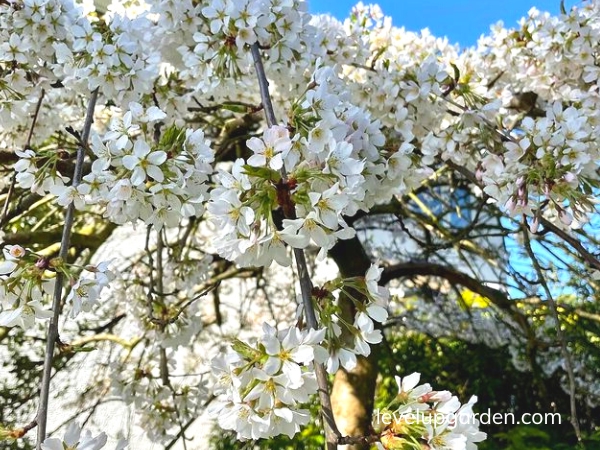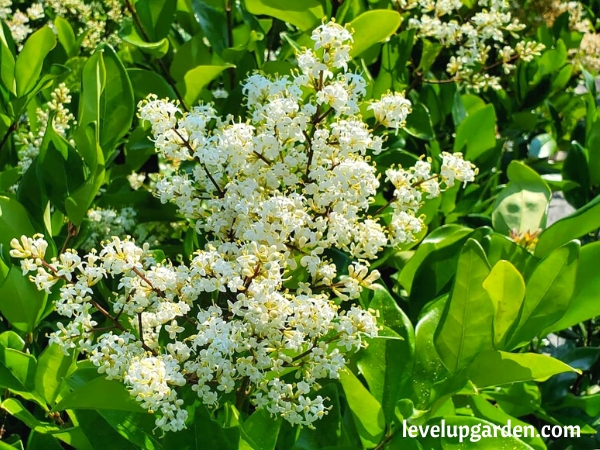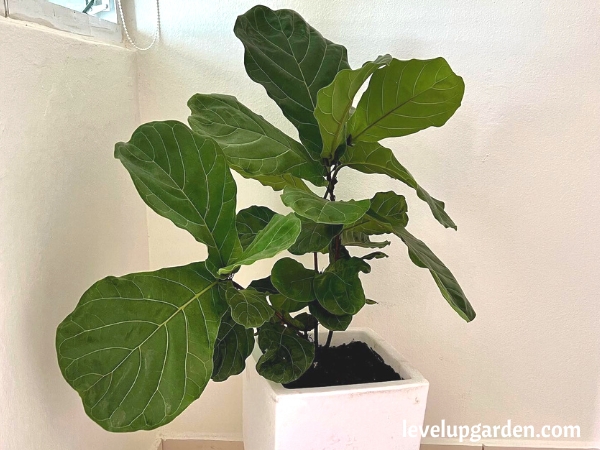The Nagami Kumquat (Fortunella margarita), also known as the oval kumquat, is a citrus fruit native to East Asia. It differs from other kumquat species in several ways, including its oval-shaped fruit and relatively small size. It is difficult to grow from seed and is generally propagated by cuttings, air layers, or grafting from rootstock.
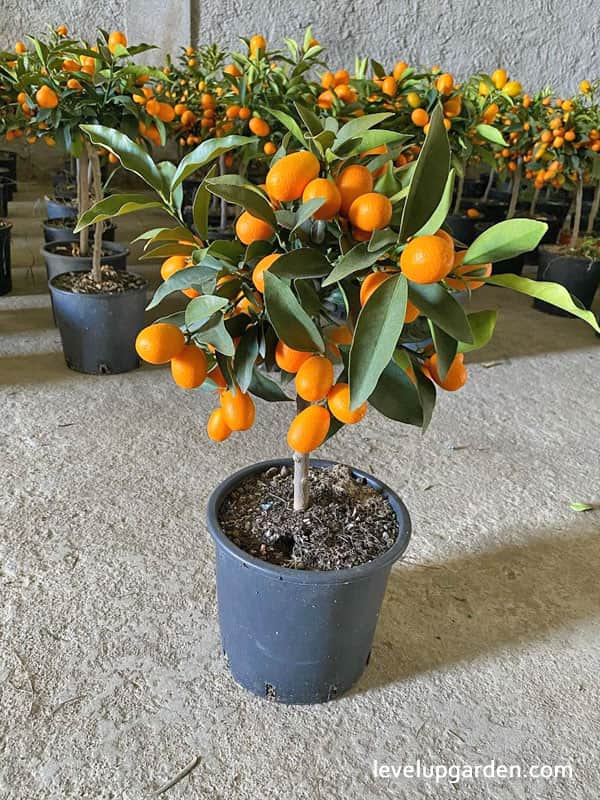
This small tree produces bright orange, delicately acidic, oval fruits on dense branches from fall to mid-winter. The rind is sweet and the fruit is usually eaten whole. This is a very ornamental variety in containers or in brightly lit indoor locations.
The Nagami Kumquat was introduced to North America in the late 1800s. It produces sweet, small, oval-shaped fruits. Since then, the kumquat tree has grown in popularity both as an ornament and as an attractive and tasty fruit.
Moreover, the fruit can be eaten raw, including the skin. It is also sliced and mixed with lettuce and fruit salads, used to flavor drinks, and utilized as an ingredient in jams and jellies. To enjoy the best flavor while fresh, it is important to “never stop chewing”. They are delicious in any form: candied, stewed, canned, or whole.
Juice the pulp into mixed citrus juices. It can be substituted for lime in gin and tonic cocktails. Decorate the rim of a glass with a twist of Nagami rind. You can also slice the sweet rind and add it to salads. You can use very healthy cranberries instead of overly sweet dried cranberries that are heavily dusted with sugar.
You can candy them for gifts or use the berries for jelly. Serve with savory meats for an easy and delicious Asian fusion dish. Nagami Kumquat is a very versatile ingredient in any cuisine.
Also, it is known for bringing luck and prosperity, this small tree produces a citrus fruit that has been a staple in China, Japan, India, and Southeast Asia for centuries. It is most popular for its unique luscious fruit, beautiful tree form, and year-round fruit display.
I. Plant Profile – An Overview of the plant
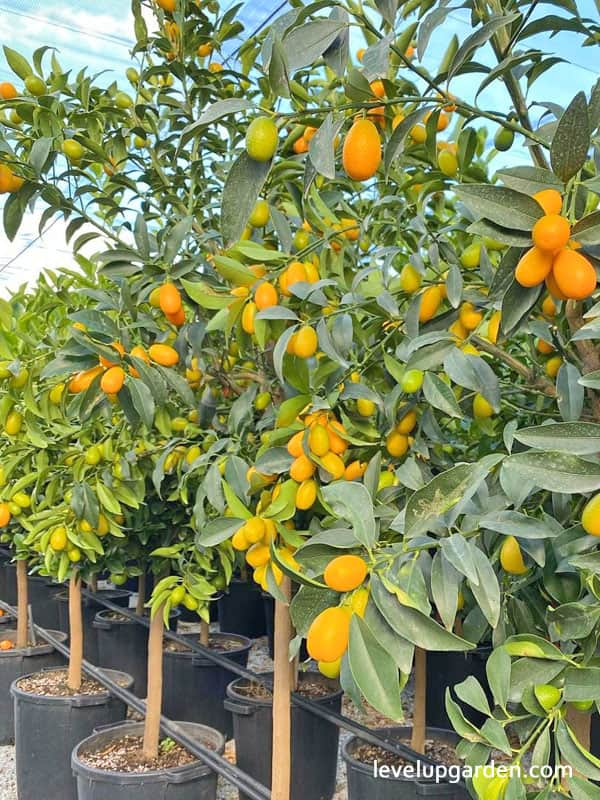
| Common name | Nagami Kumquat Tree |
| Botanical Name | Fortunella margarita ‘Nagami’ |
| Bloom Time | Spring to Late Summer |
| Type | Evergreen |
| Flower Attribute | Fragrant, Repeat Flowering |
| Flower Color | White |
| Foliage Color | Green |
| Growth Habit | Round |
| Light Needs | Full sun |
| Water Needs | Moderate |
| Mature Height | 15 – 18 feet |
| Mature Spread | 12 – 15 feet |
| Sun Exposure | Full Sun |
| Soil | Well Drained |
| Moisture | Low |
| Growth Rate | Medium, Slow |
| Foliage | Evergreen |
II. Appearance
The Nagami kumquat (Fortunella Margarita) is the most commonly grown type of kumquat. The kumquat is a sour fruit, popular in China and other Asian countries. Trees are small to medium-sized, dense, and somewhat fine-grained.

It is known to be cold tolerant due to its semi-dormant nature from late fall to early spring. Kumquat trees are particularly susceptible to zinc deficiency, which can result in smaller leaves and shorter internodes. Kumquat flowers in summer and the fruit matures in late winter and is well retained on the tree.
A typical Nagami fruit is oval, 1.4 inches long and 3.4 inches wide. The orange rind is sweet and the light orange flesh is acidic, and the entire fruit can be eaten. The fruit contains 5-6 seeds.
III. Growing and Care Conditions
Planting
For the Nagami Kumquat Tree, 6 to 8 hours of sunlight per day is ideal. It can be grown in the shade, but a sunny location is preferable. Also, humidity is better, so it may be necessary to mist water the leaves daily to increase humidity.

However, for potted plants, misting water daily will increase humidity, but placing a tray of stones filled with water under the plant will allow the water to evaporate and supply moisture to the tree.
When ready to plant, prepare well-drained soil and dig a hole twice as wide as the roots and as deep as the length of the roots. Place the tree in the hole and backfill.
After planting, give the kumquat tree a deep watering for about 5 minutes. Mulching around the tree will insulate the roots and keep the plant warm during the cold winter months. If planting in containers, choose containers that are twice the width of the shipping container.
Light
Nagami kumquats require at least 6 hours of direct sunlight per day. Nagami kumquat grows best when planted in a sunny location, but can also grow well in partial shade throughout the day. It also prefers a high humidity environment and may need to be misted daily or watered frequently if planted in a dry area.
Once you have decided where to plant the tree, dig a hole the same depth and twice as wide as the rootball. Place the tree vertically in the hole and backfill with soil. Tamp down the soil lightly, water the planting area thoroughly, and add soil if settlement is observed.
Watering
The kumquats do not like to get their feet wet. Be sure to water deeply to allow water to penetrate the roots. After watering, allow the top 2 to 3 inches of soil to dry completely before watering again.
With potted kumquats, try sticking your index finger about 2 cm into the soil. If there is moisture, refrain from watering until it feels dry at that depth. Stop watering when you see water coming out of the drainage hole at the bottom of the pot.
Fertilizer
During the warmer spring and summer months, apply a citrus-specific fertilizer once every 6 weeks. In the fall and winter, reduce it to once every two to three months. Once the tree has matured a bit and a few years have passed, you can omit the cold-season fertilizer application. Follow the manufacturer’s instructions on the packaging.
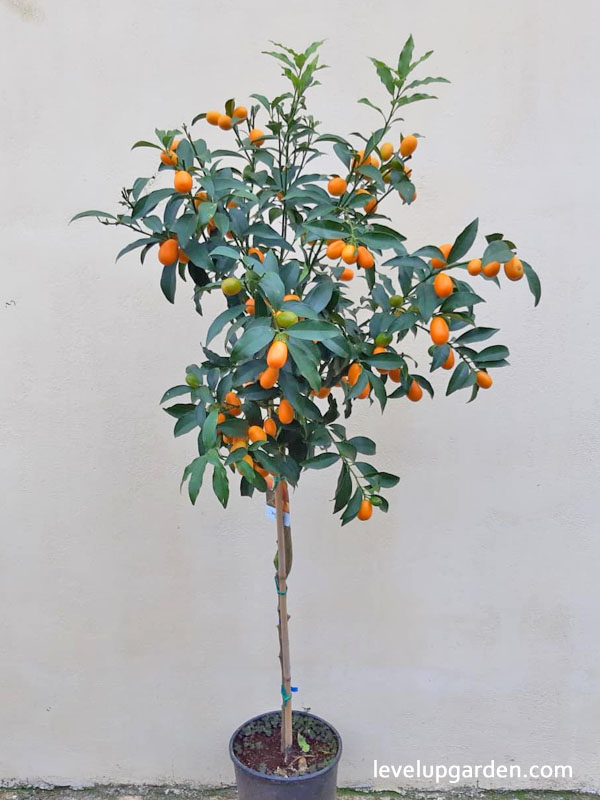
Soil Requirements
Nagami Kumquat trees prefer loamy, moist, well-drained soils with a soil pH of slightly acidic to neutral. Avoid planting in heavy clay soils, as root rot can occur.
Pruning
In-ground kumquats can be pruned at any time of the year except winter. Make cuts at 45-degree angles to remove dead or crossed branches and to thin the tree to allow light to penetrate between branches. After fruiting, remove dead wood to improve airflow in the center of the tree. Remove suckers extending from the base of the tree. Potted kumquats can be pruned at any time.
Pests and Diseases
Nagami kumquats are susceptible to muddy underfoot conditions, which can lead to root rot. Excessive mulching around the tree may also promote the development of this fungal disease. Root rot spreads between trees, so infected trees may need to be removed.
Aphids and similar small pests can be found on kumquat trees, but they are not usually a threat. When aphids are present in large numbers, black soot disease, which interferes with photosynthesis, may occur. If outbreaks become uncontrollable, ladybugs and insecticidal soap are effective remedies.
Pollination
Trees self-pollinate, but for indoor trees, stick a small, dry-tipped paint brush into the center of the flower and hand-pollinate it. Swish it around and collect the pollen from the brush. Go to the next flower and repeat this process until all flowers have been processed.
Remember to do this process once a day and do not wash the paintbrush until pollination is complete. The flowers will naturally fall off and begin to bear fruit.
IV. Uses
The prolific Nagami kumquat tree brings forth an abundance of fruit during the growing season each year. In Asia and the United States, people decorate this tree for the Chinese New Year and bring the plant indoors to celebrate. The upright, compact plant has a gentle growth habit and can be easily tailored into a very attractive vase form. It will make a sophisticated and useful specimen.
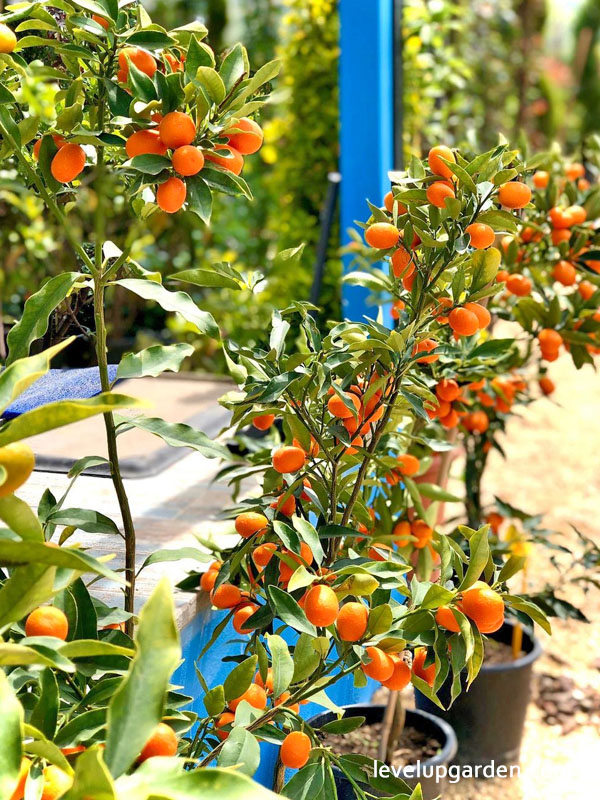
Once established, the orange fruit can hang on the tree for months. This makes it a wonderful display value in the landscape. The deep green leaves give the tree a soft and healthy look all year round, even when not in bloom or producing fruit.
Moreover, Nagami kumquat has a sweet skin, but the center of the fruit is slightly sour and has a lemon-like flavor when eaten. Many people find it tasty when eaten as is. If you want to make preserves, it can be made into marmalade, and if you soak it in brandy, it tastes wonderful.
Also, Nagami kumquat, like ornamental trees, should be used in the landscape. Allow enough space to allow light to enter from all directions without being shaded by large trees or buildings. Plant in large containers on the patio for fragrant flowers and easy picking of fruit. Can be grown indoors as long as there is enough sunlight and space.
V. Why should you buy this plant
There are many pros in growing Nagami Kumquat Tree. With Nagami kumquat trees, you can enjoy sweet, juicy kumquats at home. Nagami is particularly resistant to drought, pests, and disease, and it couldn’t be easier to grow.
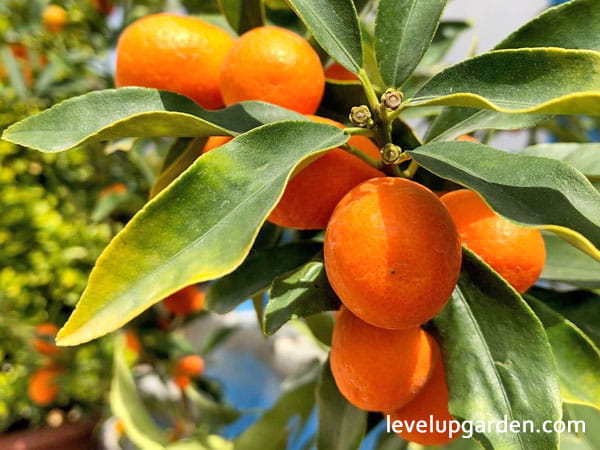
An interesting fact is the tastiest part of kumquat is actually the skin and not the flesh. Nagami has a unique taste and texture, and is delicious in marmalade, preserves, and dried fruit. The larger fruits will start bearing in the first year. This dwarf citrus is great for containers and is hardy and disease resistant, so no chemicals are needed.
Moreover, they are carefree. Not many fruit trees can grow in any soil, but Nagami kumquat rewards well in all conditions. This dwarf citrus is ideal for containers and does not require chemicals because it is hardy and disease resistant. It is also resistant to pests and diseases, so you can always pick and eat the fruit directly from the tree.
Ripe Nagami kumquats are actually preserved on the tree. Whenever you feel like having a tasty snack, you can pick them. They are so juicy that you can put them straight into your mouth without peeling. They are also great for marmalade and will be fun to make a variety of desserts for family and friends.
Growing in sandy soil will yield larger, juicier kumquat fruits. If growing in a large container, use a sand-based potting mix. This citrus is resistant to insects and disease and is easy to grow. It is best for fruits that can be eaten right off the branch.
In Cantonese, “kumquat” means “golden orange”. The splendor of a Nagami kumquat tree filled with brightly colored fruit is a sight to behold. The fragrant blossoms are intoxicating during the hot summer months, and the fruits ripen in February, making the fresh fruit a midwinter treat.
VI. FAQs
How big does the Nagami kumquat grow?
It is a slow grower, 8 feet tall and 6 feet wide. It produces small orange fruits that are ornamental and can be placed anywhere.
Does the Nagami kumquat self-pollinate?
The Nagami kumquat tree does pollinate. The Nagami kumquat tree is self-pollinating, bearing fruit on a single plant.
How quickly does a kumquat tree grow?
When kumquat fruits ripen, the skin is sweet and edible, and the flesh inside is slightly sour. Kumquat trees grow at a slow rate, up to 24 inches per year. Planting is done in the spring.
Can Fortunella Margarita be eaten?
Fortunella margarita is a small fruit tree that produces edible fruit, and unusually for a citrus, the entire fruit can be eaten. In fact, the kumquat can be eaten not only for its pulp, but also for its peel.

